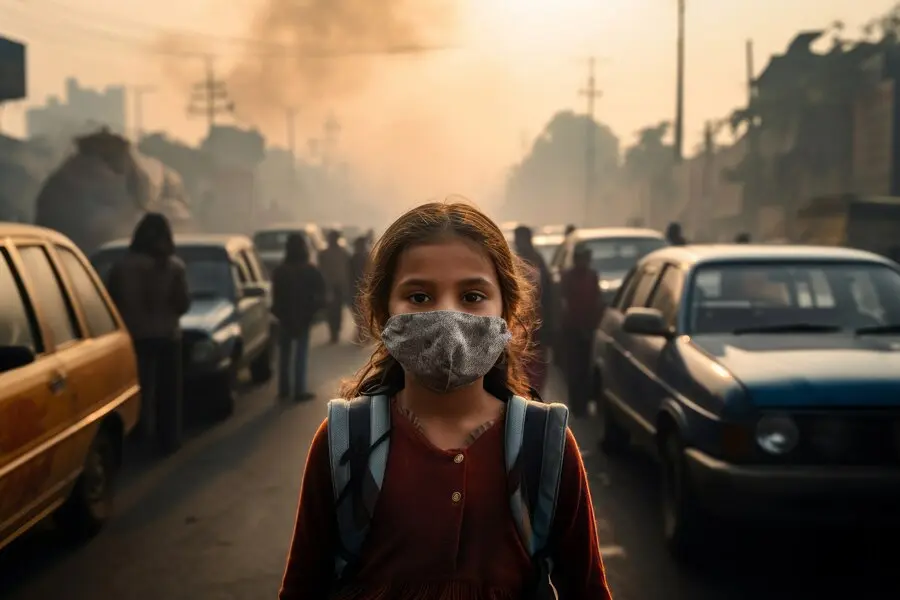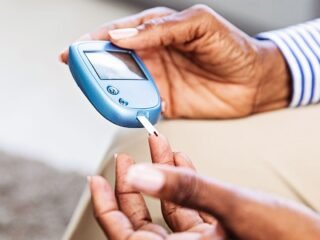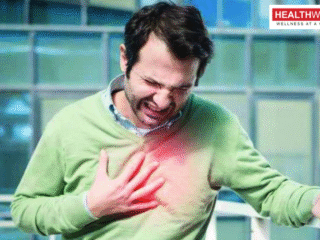New Delhi, 29 October, 2025: As the air quality in Delhi-NCR continues to plunge into the “very unhealthy” and “hazardous” zones, doctors across the region are witnessing a sharp surge in patients complaining of persistent cough, breathlessness, wheezing, and chest tightness.
According to Dr. Neeraj Gupta, Associate Director, Pulmonology, Respiratory Critical Care & Sleep Medicine at Max Hospital, Gurugram, prolonged exposure to polluted air can have serious and lasting effects on the respiratory system, especially for individuals with asthma, COPD (Chronic Obstructive Pulmonary Disease), and other chronic lung conditions.
“Even a few hours of exposure to poor-quality air can irritate the lungs,” explains Dr. Gupta. “For those with pre-existing respiratory diseases, such exposure acts like fuel to fire, worsening inflammation and narrowing airways.”
1. Airway Inflammation: The First Line of Damage
Pollutants like PM2.5 (fine particulate matter), PM10, and ozone are small enough to penetrate deep into the lungs. Once inhaled, they irritate the delicate lining of the airways, triggering inflammation and swelling.
Dr. Gupta explains that this inflammatory response is the body’s defense mechanism — but in polluted conditions, it becomes chronic and damaging.
“When pollutants settle on the bronchial lining, they cause microscopic injury,” he says. “The body tries to heal it by sending immune cells, which release inflammatory chemicals. Over time, this constant cycle leads to swollen, hypersensitive airways.”
Symptoms include:
- Persistent dry or wet cough
- Wheezing or whistling sound while breathing
- Shortness of breath
- Chest tightness or discomfort
For healthy individuals, these symptoms may appear mild and temporary. But for asthma and COPD patients, the inflammation can trigger full-blown respiratory attacks requiring medical attention.
2. Bronchospasm: The Airway Muscles Go Into Overdrive
High pollution levels can cause the smooth muscles surrounding the airways to tighten suddenly, a condition known as bronchospasm. This makes it extremely difficult for air to pass in and out of the lungs.
Dr. Gupta warns that such episodes are particularly dangerous for patients with asthma and COPD. “Even a moderate increase in AQI can provoke bronchospasm, resulting in wheezing, coughing fits, and acute breathlessness,” he notes.
During periods of heavy smog — especially in early morning and late evening — the concentration of pollutants peaks. That’s when flare-ups and emergency hospital visits tend to spike.
Key warning signs of bronchospasm:
- Sudden difficulty in breathing
- Tightness in chest or throat
- Wheezing that worsens at night
- Increased use of rescue inhalers
Dr. Gupta advises patients to keep inhalers handy and to avoid outdoor exposure during peak pollution hours.
3. Increased Mucus Production: The Body’s Defense Turns Problematic
Inhaling polluted air stimulates the mucus glands in the airways, leading to excessive phlegm production. While mucus is meant to trap and clear pollutants, excess buildup can obstruct breathing passages.
“This is particularly problematic in COPD patients,” says Dr. Gupta. “They already have narrowed airways, and extra mucus makes it even harder for them to breathe.”
The result is frequent coughing, throat congestion, and morning breathlessness — symptoms that many mistake for seasonal flu but are actually pollution-induced airway reactions.
To manage mucus buildup:
- Stay hydrated — water helps thin mucus.
- Use prescribed mucolytic medications if recommended.
- Avoid exposure to dusty or smoky environments.
4. Reduced Lung Function: The Long-Term Price of Breathing Toxic Air
While short-term pollution exposure causes temporary irritation, long-term exposure can lead to permanent decline in lung function.
Dr. Gupta warns that children, elderly individuals, and people with existing lung or heart disease are most vulnerable. “Continuous inhalation of polluted air leads to scarring and loss of elasticity in lung tissues,” he explains. “This reduces lung capacity, meaning the lungs can hold and exhale less air over time.”
Over years, such exposure may contribute to chronic bronchitis, early-onset COPD, and even cardiovascular complications.
Research has also shown that sustained poor air quality increases the risk of lung cancer — particularly in areas where PM2.5 levels exceed safe limits year-round.
5. Heightened Sensitivity: When Lungs Become Overreactive
Asthma and COPD patients already have inflamed airways, which makes their lungs hypersensitive to environmental irritants. Even when the AQI is at “moderate” levels, they may experience coughing, breathlessness, or chest tightness.
Dr. Gupta explains: “For a healthy person, an AQI of 100 might not cause symptoms. But for someone with asthma or COPD, that same air quality can trigger discomfort. Their airways are primed to react to the slightest irritant.”
He adds that this heightened sensitivity means patients should start precautions early — not wait until pollution becomes severe or hazardous.
Air Quality Index (AQI) and Health Impact
Dr. Gupta outlines how varying levels of air quality affect respiratory health, especially for sensitive groups:
| AQI Level | Air Quality | Effect on Asthma/COPD Patients |
|---|---|---|
| 0–50 | Good | No significant impact |
| 51–100 | Moderate | Mild symptoms in sensitive individuals |
| 101–200 | Unhealthy for Sensitive Groups | Cough, breathlessness, wheezing; avoid outdoor exertion |
| 201–300 | Very Unhealthy | Frequent asthma/COPD attacks; increased inhaler use |
| 301+ | Hazardous | Severe breathing difficulty; emergency visits may rise |
Precautionary Measures: How to Protect Your Lungs During Pollution Spikes
While the air outside may not always be within our control, personal preventive measures can significantly reduce exposure and symptoms.
1. Check AQI Before Stepping Out
Download reliable AQI monitoring apps to stay updated. If AQI exceeds 150, limit outdoor activity, especially for elderly and children.
2. Avoid Peak Pollution Hours
Early mornings (6–9 a.m.) and late evenings (6–9 p.m.) often record the highest concentration of pollutants. Plan errands and walks during mid-day when air dispersion improves.
3. Use N95 or N99 Masks
Regular cloth or surgical masks do not block fine particles. Use certified N95/N99 masks that can filter PM2.5 and smaller pollutants.
4. Invest in Air Purifiers
Place HEPA-filter air purifiers in frequently used areas, especially bedrooms. Keep windows closed during high AQI days.
5. Keep Rescue Inhalers Handy
Patients with asthma or COPD should always carry prescribed inhalers. Dr. Gupta emphasizes using maintenance inhalers regularly — not only when symptoms appear.
6. Stay Hydrated
Drinking plenty of water helps thin mucus and keeps airways moist, reducing irritation.
7. Avoid Outdoor Exercise When AQI >150
Outdoor jogging or cycling in poor air quality can do more harm than good. Switch to indoor workouts, yoga, or breathing exercises.
High-Risk Groups Need Extra Caution
Certain individuals are particularly vulnerable to pollution’s respiratory effects:
- Children: Their lungs are still developing and breathe more air per body weight.
- Elderly: Reduced immunity and existing illnesses make them more susceptible.
- Pregnant Women: Exposure increases risk of low birth weight and preterm delivery.
- Asthma & COPD Patients: Already compromised lungs make pollution effects more severe.
When to Seek Immediate Medical Help
Pollution-related respiratory distress can escalate quickly. Seek emergency care if you experience:
- Continuous breathlessness despite using inhalers
- Bluish lips or fingertips (sign of low oxygen)
- Severe chest tightness or dizziness
- Persistent wheezing or coughing lasting more than a week
Early medical intervention can prevent complications like acute respiratory failure or lung infections.
The Path Forward: Cleaner Air and Healthier Lungs
Dr. Gupta emphasizes that personal precautions, while essential, cannot substitute for systemic action. “We need collective responsibility — policy enforcement, emission control, and greener city planning,” he says.
He adds that awareness is equally vital: “People must understand that poor air is not just discomfort — it’s disease. It can shorten life expectancy, worsen chronic conditions, and impair children’s lung development.”
Key Takeaways
- Air pollution triggers airway inflammation, bronchospasm, mucus buildup, and reduced lung function.
- Asthma and COPD patients are highly vulnerable, even at moderate AQI levels.
- Monitor AQI, wear N95 masks, use air purifiers, and keep inhalers accessible.
- Avoid outdoor exertion when AQI >150.
- Seek medical help for persistent or severe respiratory symptoms.






